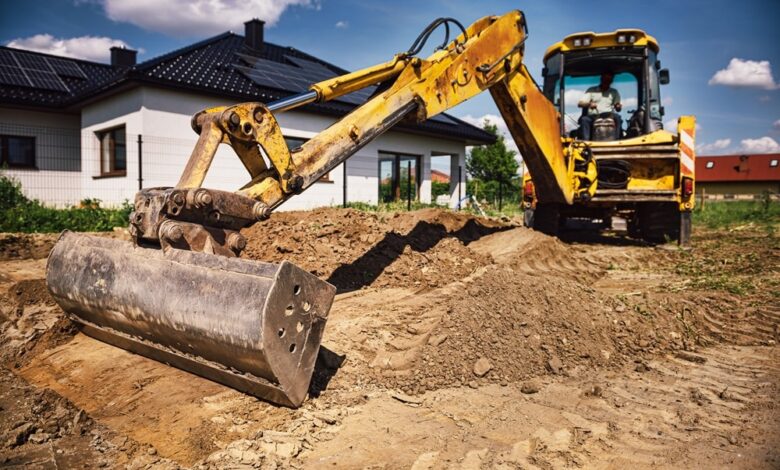Unlocking the Full Potential of Land: The Importance and Process of Site Preparation

When it comes to developing raw land, few steps are as critical as the initial preparation of the site. Before construction, agriculture, or landscaping can begin, the ground must be made suitable for its intended purpose. This often involves removing trees, vegetation, rocks, and debris, a process known as land clearing. Proper land preparation sets the foundation for all future development, ensuring not only the structural integrity of any buildings but also promoting environmental balance when done responsibly.
The Purpose Behind Clearing Land
The reasons for preparing land vary depending on the intended use of the property. It may be necessary for residential or commercial development, farming, recreational use, or even wildfire prevention. Whatever the objective, the underlying goal remains the same: to create a stable, usable, and safe surface.
In real estate development, for instance, contractors must begin with a clean and level surface before laying foundations. In agriculture, overgrown or forested areas need to be cleared to make room for crops and irrigation systems. Even when used for landscaping or garden design, the natural terrain must often be reshaped to meet aesthetic or functional needs.
The task is complex and requires careful planning and execution, especially when aiming to minimize environmental impact.
Methods of Site Preparation
There are several ways to clear land, and the right method often depends on the size of the property, the density of vegetation, and the future plans for the area. Here are the most commonly used methods:
1. Manual Clearing
Manual clearing involves using hand tools such as axes, machetes, and chainsaws. This method is most suitable for small areas or places where heavy machinery cannot reach. It is labor-intensive but allows for precision and selective removal of vegetation.
2. Mechanical Clearing
For larger plots or heavily wooded areas, mechanical clearing is more efficient. Bulldozers, backhoes, excavators, and mulching machines are typically used to remove trees, stumps, rocks, and other obstacles. This method can clear vast tracts of land in a fraction of the time it would take manually.
3. Controlled Burning
In some cases, especially in agriculture, controlled burning may be used to clear out vegetation and enrich the soil with ash. However, this method must be handled by professionals and often requires permits and fire safety measures.
4. Chemical Clearing
Herbicides can be used to kill invasive plants and brush before removal. This method is generally used as a complement to other clearing techniques, especially when dealing with persistent root systems that mechanical tools cannot fully extract.
Key Considerations Before Starting the Process
Before initiating any land transformation project, it is crucial to understand the legal, environmental, and safety aspects involved. Failing to do so can result in penalties, project delays, and ecological harm.
a. Permits and Regulations
Depending on the region and type of property, landowners may need permits before any work begins. These regulations help ensure that natural habitats, endangered species, and water resources are protected.
b. Environmental Impact
Improper site preparation can lead to soil erosion, water pollution, and destruction of natural habitats. Professional assessment and planning can help reduce the negative impact on the surrounding ecosystem.
c. Soil Testing
Conducting a soil test can inform whether the land is suitable for its intended use. Soil composition, pH levels, and drainage capabilities are essential factors in determining the feasibility of a project.
d. Utility Mapping
Underground utilities such as gas lines, water pipes, and electrical cables must be identified before work begins. Damaging these lines can result in expensive repairs and hazardous situations.
Steps Involved in Land Clearing
Clearing a piece of land is not as simple as knocking down a few trees. It’s a multi-step process that requires precision and expertise. Below is a typical sequence of steps followed in a standard clearing project:
1. Site Assessment
A thorough examination of the land helps determine the scope of work, the types of vegetation, and potential challenges like rocky soil or wetlands.
2. Marking Boundaries
Clearly marking property lines and zones to be cleared ensures the work stays within legal and planned limits.
3. Vegetation Removal
This involves the systematic removal of trees, shrubs, weeds, and other plant life. In cases of large trees, professionals may need to cut them down in sections to avoid damage to nearby areas.
4. Stump and Root Removal
Stumps and root systems can be particularly challenging. Excavators or stump grinders are often used to eliminate them fully and prevent future regrowth.
5. Debris Removal and Disposal
All organic and inorganic waste must be properly disposed of, either through mulching, recycling, or hauling to disposal sites. In many cases, wood from felled trees can be repurposed for timber or firewood.
6. Grading and Leveling
Once the area is cleared, the land must be leveled to ensure proper drainage and prepare for construction or cultivation. This may include filling holes, compacting soil, and contouring the terrain.
7. Erosion Control
To prevent soil erosion, especially on slopes or near water bodies, erosion control methods like silt fences, retaining walls, or vegetation buffers may be employed.
Equipment Commonly Used
Land clearing requires a wide range of tools and machinery. Some of the most commonly used include:
- Bulldozers – For pushing large debris and leveling ground.
- Excavators – Ideal for digging and removing stumps and rocks.
- Chainsaws – Used in manual tree felling and branch removal.
- Mulchers – Reduce trees and brush into usable mulch.
- Skid Steers – Versatile machines for digging, grading, and transporting materials.
The choice of equipment largely depends on the type and density of vegetation, the size of the project, and the accessibility of the land.
Safety Protocols
Safety is a top priority in any site preparation activity. The use of heavy machinery, the risk of falling trees, and the potential presence of hazardous materials make it essential to follow strict safety protocols.
Some key measures include:
- Wearing proper protective gear such as helmets, gloves, and boots.
- Ensuring that machinery is well-maintained and operated by trained personnel.
- Keeping a first aid kit and fire extinguisher on-site.
- Establishing communication among crew members with radios or mobile phones.
Additionally, periodic breaks and hydration are essential for crews working in hot or rugged conditions.
Benefits of Professional Land Preparation
Hiring professionals for land clearing offers multiple advantages:
- Efficiency: Professionals can complete the job quickly using the right tools and techniques.
- Compliance: They are familiar with local regulations and can help secure necessary permits.
- Safety: Experienced crews know how to avoid common hazards.
- Environmental Responsibility: Professionals take steps to protect nearby ecosystems and reduce waste.
While DIY clearing may seem cost-effective, the potential for error, injury, or legal trouble often outweighs any initial savings.
Future Use and Site Maintenance
Once the land is cleared and developed, maintaining it is crucial to preserving its value and functionality. This might involve regular mowing, erosion monitoring, and ensuring that invasive plants don’t return. In agricultural projects, crop rotation and soil enrichment strategies help maintain soil fertility.
For construction projects, follow-up surveys and inspections ensure that foundations remain stable and that no underground issues arise over time.
Conclusion
Preparing land for development is a foundational step that demands careful planning, the right tools, and responsible execution. From the initial survey to the final grading, each phase plays a critical role in ensuring the land is safe, usable, and primed for its intended use. Whether for farming, building, or landscaping, land clearing in Stillwater is an investment in the future of the property.
By choosing the appropriate methods and working with skilled professionals, property owners can unlock the full potential of their land while preserving the surrounding environment. When done right, this transformative process lays the groundwork for successful, sustainable, and rewarding land use for years to come.




